The monstera mint variegata is a gorgeous variety of the popular monstera deliciosa houseplant. Known for itsminty green and white variegated leaves, this plant has captured the hearts of houseplant lovers everywhere. In this blog post, we’ll explore everything you need to know about caring for, propagating, troubleshooting issues with, and generally appreciating this beautiful plant.
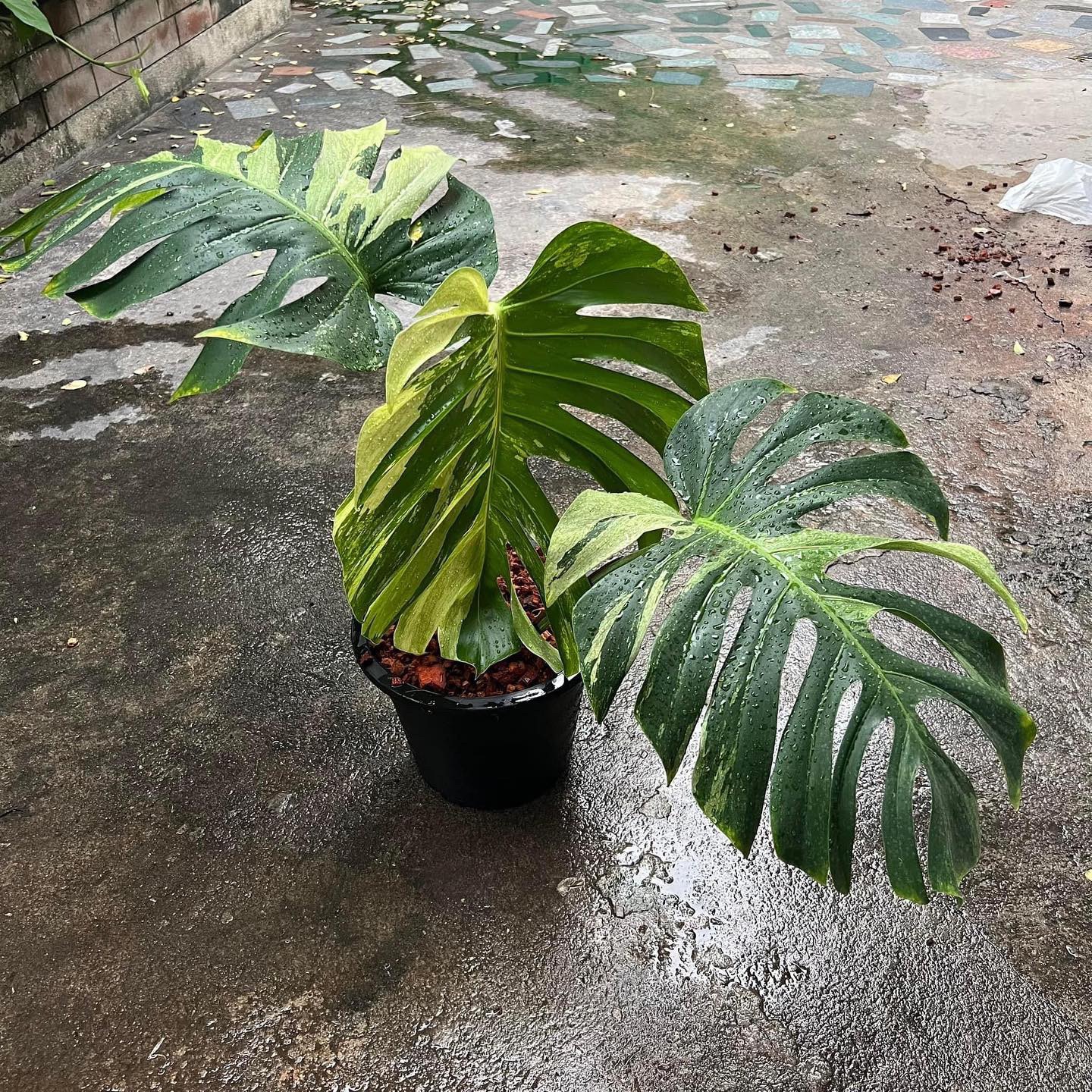
Characteristics
The monstera mint variegata sets itself apart from the species with striking coloration.
Foliage
- Mint green leaves with bright white speckles, streaks, and sections. The white portions of each leaf lack chlorophyll and cannot undergo photosynthesis.
- Leaves have the iconic split leaf appearance associated with monsteras. Natural holes and slits will form as leaves mature.
- New leaves emerge as a fresh mint green before variegation occurs. The amount and placement of white patches vary from leaf to leaf.
- Moss poles or trellises may be used to encourage vertical growth. The vine-like stems attach via aerial roots. A mature plant will achieve impressive heights.
Growth Habit
- Classified as an evergreen perennial aroid, native to tropical regions.
- Under the right care and conditions, the monstera mint variegata may reach up to 15 feet indoors. These plants have longevity when cared for correctly.
- Displays moderately fast growth when provided with adequate space, moisture, light, humidity, fertilizer, support, and repotting.
Why Choose Monstera Mint Variegata
The monstera mint variegata has rare, unique coloration patterns unseen in other houseplants. Let’s look at reasons you may want to bring one of these statement-making plants into your home.
Striking Foliage
The leaves grab your attention with their almost painted or mosaic appearance in shades of minty greens and creams. No two leaves exhibit variegation in quite the same way. The lack of chlorophyll in the white sections creates visual contrast.
Some indoor gardeners find the variegation so appealing that they actively propagate the variegated sport, creating coveted clippings from an already uncommon monstera species.
Lower Maintenance
As a variety of monstera deliciosa, the monstera mint variegata generally remains unfussy when grown under the appropriate conditions. It can tolerate some misses in watering or occasional drops to non-optimal temperatures better than other finicky aroids and tropicals.
This makes it enticing for novice houseplant owners who may still be honing their plant care skills. Even experienced indoor gardeners appreciate seeing glorious variegation with less stress.
Adds Greenery Indoors
Bringing living plants indoors connects us to nature while decorating our personal spaces. The monstera’s spreading form offers beautiful foliage interest perfect for corners, tabletops, or displaying upon shelves.
You can spotlight the monstera mint variegata as a standalone statement piece or incorporate into a lush indoor jungle amongst other houseplants. Those vivid white leaf sections will stand out beautifully.
Cleans Indoor Air
As with many houseplants, the monstera mint variegata naturally filters some toxins from indoor air through its normal growing processes. Its sizable leaves have more surface area to absorb air pollutants you’d rather not breathe.
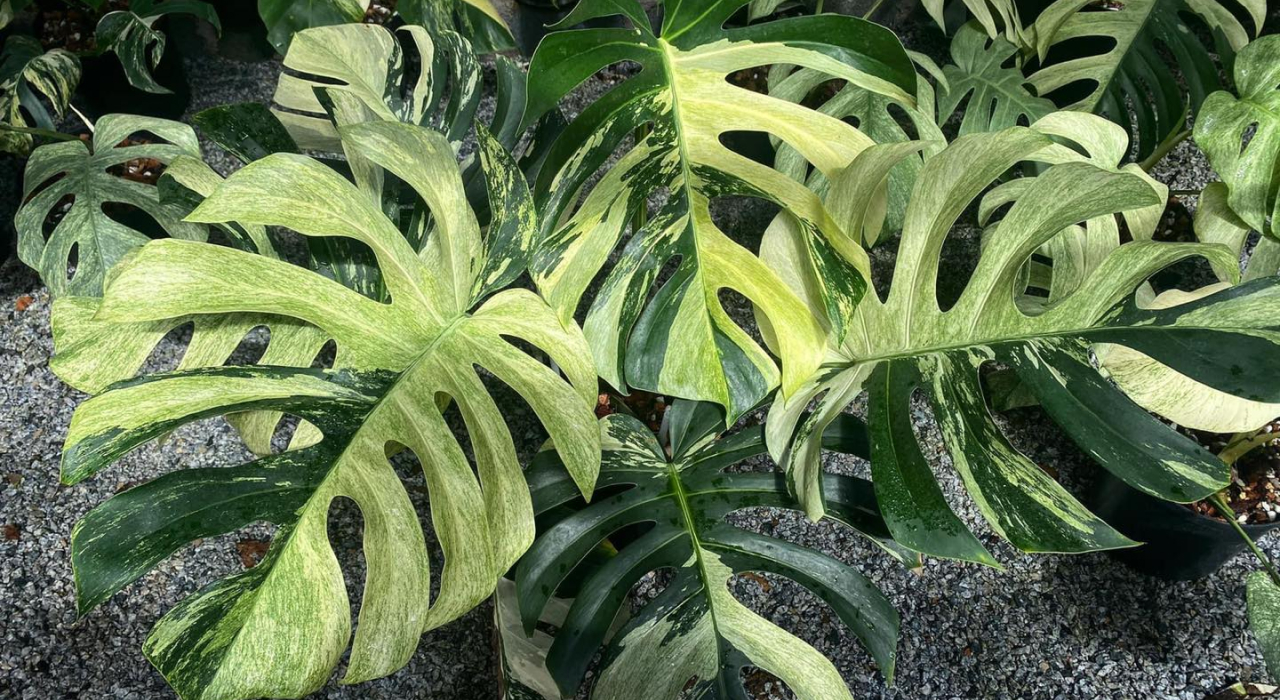
Caring for Monstera Mint Variegata
Achieving optimal growth with your monstera mint variegata requires paying attention to some key care aspects. Let’s explore proper light, soil preparation, watering and humidity needs for your plant to thrive indoors. or more detailed insights on how to best care for your Monstera, including soil preparation and light needs, check out our comprehensive guide on caring for Monstera plants.
Light Requirements
The monstera mint variegata thrives in bright, indirect light Exposure to some direct light is fine but avoid intense afternoon sunbeams. East or west facing windows work perfectly. Offer a sheer curtain to diffuse harsh light if needed.
Insufficient light leads to small leaves without fenestrations (holes) while too much direct sun risks scorch. Adjust placement based on intensity of natural light in your home, monitoring how the plant responds. Grow lights may supplement winter or low light conditions.
Appropriate Soil
Use a chunky, fast draining potting medium amended with perlite for improved soil aeration. Self-watering vessels often work well, helping maintain consistent moisture. Monsteras struggle in soggy soil prone to rotting roots and fungal issues. Whether renovating a mature plant or potting up propagations, incorporate slow release fertilizer granules to foster healthy growth.
Watering Best Practices
Allow soil to partly dry out before watering again, then soak thoroughly until excess drains from the drainage holes below. This wet-dry cycle keeps oxygen flowing to roots while discouraging potential root rot issues. Reduction in water needs is expected during cooler and darker winter months depending on indoor conditions and maturity of each plant.
Because individual plants, pots and indoor settings differ so greatly, I cannot provide an exact watering timeline. However some key things to observe are:
- Soil moisture level by touch
- Soft or shriveled lower leaves indicating under or overwatering
- Premature yellowing of older leaves
- Changes in variegation patterning
- Slowed growth
Adapt as needed based on these visual cues. Increase water gradually in warmer months or as plants mature into larger specimens.
Ideal Humidity Levels
Hailing from tropical locales, the monstera favors average home humidity levels around 50-60% but can still get by at less. Group plants together to raise ambient moisture. Use pebble trays or humidifiers to boost as able based on your environment, adjusting with seasonal shifts. Avoid moisture extremes to limit risk of bacterial or fungal leaf issues.
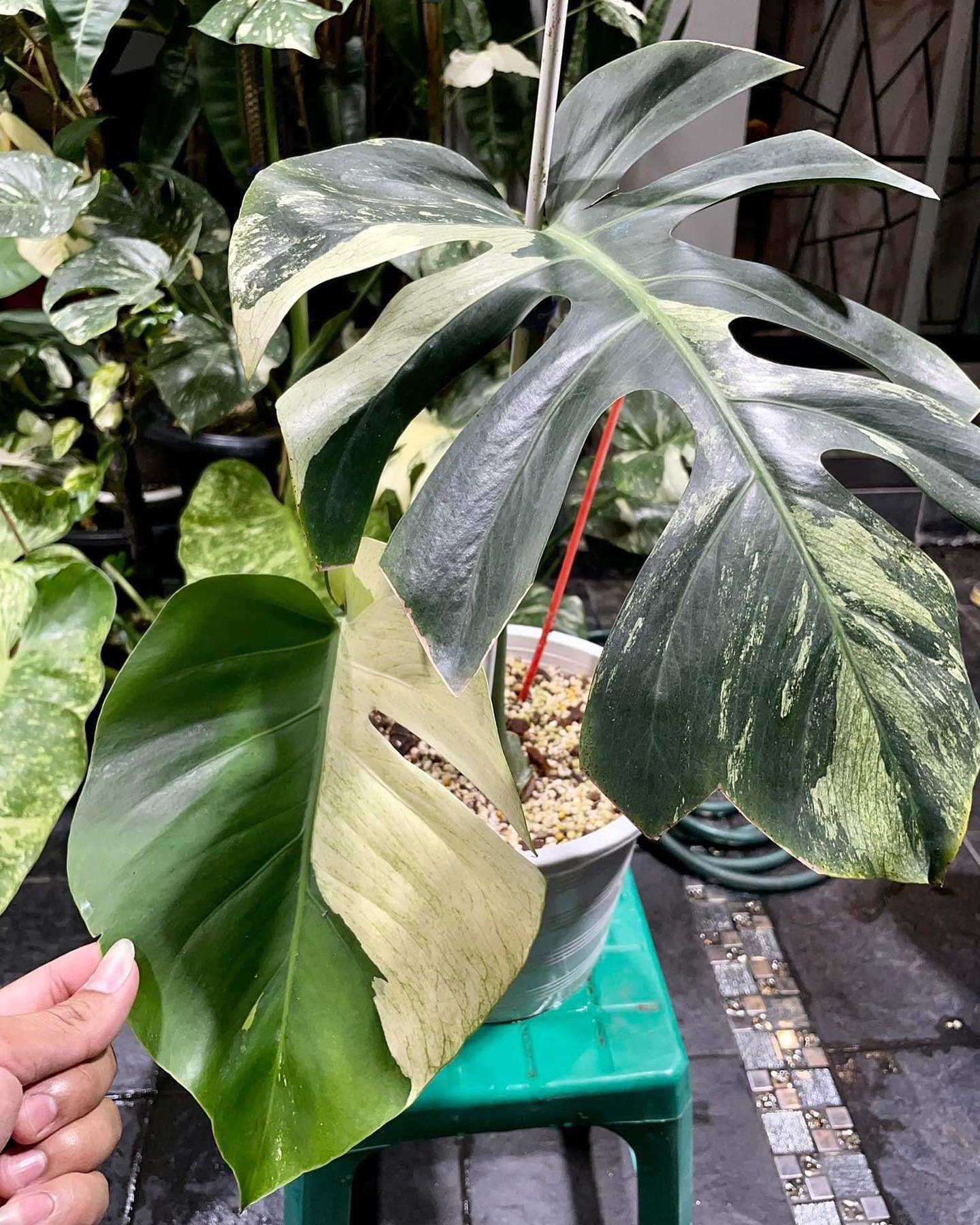
Where to buy monstera mint variegata? Benefits from importing plants from Thailand
- Shipping: Door to door shipping, fast and safe with Dragon Courier
- Biodiversity: Thailand is known for its rich biodiversity, including a wide variety of aroid species. This diversity allows importers to access a broad range of unique and exotic aroid plants.
- Quality and Health of Plants: The suitable climate helps the plants grown here stay healthy and of high quality.
- Cost-Effectiveness: Due to favorable growing conditions and efficient production methods, Thai aroid plants can often be more cost-effective compared to those from other countries.
- Access to Hybrid Varieties: Thai growers are often involved in the development of new hybrid aroid varieties, offering unique plants that may not be available from other sources.
Monstera species are the most sought after by aroid plant lovers
Common Issues and Solutions
When provided proper growing conditions, the monstera mint variegata proves relatively sturdy. But if cultural needs are not met, you may encounter a few problems. If you’re encountering issues with your Monstera Mint Variegata, such as slow growth or leaf discoloration, find helpful solutions in our guide on how to heal a Monstera plant. Let’s explore some potential issues and remedies:
Poor Fenestrations
Cause: Inadequate light exposure
Solution: Slowly transition plant to brighter location with indirect sunlight to encourage leaves with characteristic holes and slits. Supplement with grow lights if winter or low natural light hinders development of fenestrations.
Leaf Spotting/Discoloration
Cause: Over or under watering, intense light, temperature extremes or dry air
Solution: Evaluate watering practices and modify light or humidity as needed. Remove severely affected foliage. Improve conditions for healthier new growth.
Slow Growth
Cause: Low temperatures, drought, limited fertilization or repotting
Solution: Increase temperatures slightly within comfortable range for household. Water more frequently and feed with balanced fertilizer according to label directions. Repot rootbound plants into appropriately sized containers with fresh growing medium to stimulate new growth.
Leggy Growth
Cause: Insufficient light
Solution: Relocate gradually to brighter location with more evenly diffused light. Prune excessively long, bare stems back to stimulate bushier regrowth. Stake for support until reestablished.
FAQs
Get answers to some frequently asked questions plant parents often have about growing and caring for the monstera mint variegata:
Is the Monstera Mint Variegata Rare?
Yes, it remains difficult to find in many areas due to high demand. Variegation occurred naturally as a random genetic mutation forming a “sport” of the monstera deliciosa species. Growers propagate cuttings seeking to stabilize traits. Limited stock sells quickly online and in boutique greenhouses when available.
What Causes White Leaves on a Monstera?
Monsteras exhibiting white coloration contain an absence of chlorophyll in those leaf sections. Interveinal variegation like that of the monstera mint variegata develops from cell level genetic differences during new growth.
Why Are Variegated Monsteras So Expensive?
Variegation is uncommon and coveted in houseplant varieties, driving costs due to rarity and beauty. The striking foliage has high consumer appeal. Growers invest extra time, energy and inputs propagating desirable sports which translates into higher pricing. Supply struggles to meet rising popularity.
Can a Monstera Regain Variegation?
Leaves emerge green from the plant’s nodes before variegation occurs during development. If variegation diminishes significantly or reverts back to solid green with minimal white areas, it unfortunately will not return on that plant which has lost the genetic propensity.However when propagated correctly, clones should continue exhibiting variegation.
What is a Monstera Sport?
A “sport” refers to a genetic mutation within plant tissue that causes variation from the normal species traits – in this case, expression of leaf variegation. The monstera mint variegata originated as a sport. Sports are cloned via cuttings in order to preserve and distribute the unique characteristics.
Conclusion
With its vibrant minty green leaves decorated with mesmerizing white variegation, the Monstera Mint Variegata makes an outstanding addition for indoor plant parents seeking something just a little different. Caring for one of these coveted houseplants need not be complicated with attention to light, water, humidity, and using a well-aerated potting medium. Provide adequate care tailored to your environment, and this beauty will reward you with continued unique foliage to brighten your space for years to come. The Monstera Mint Variegata remains highly sought after for good reason – give one a try to see why!
Don’t wait to bring this exotic charm into your home. Order your Monstera Mint Variegata today and start enjoying its enchanting beauty!

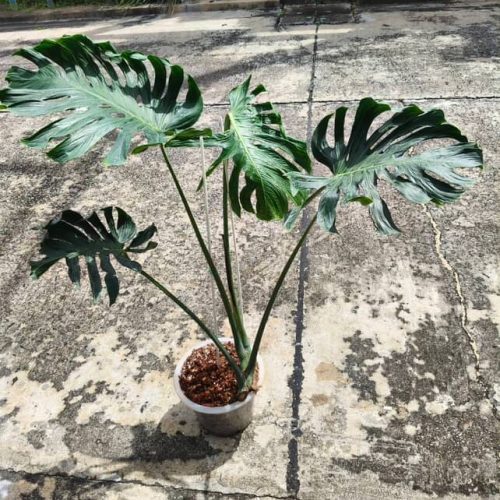
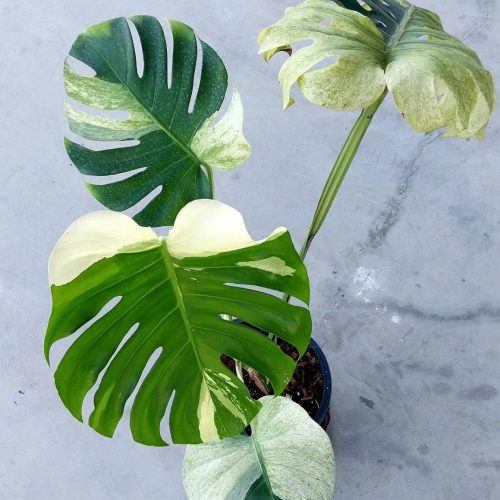



![12x Monstera Borsigiana Albo half leaves variegata [3-4 leaves]](https://greenboog.com/wp-content/uploads/2024/10/Monstera-Borsigiana-Albo-half-leaves-variegata-1-500x500.jpg)
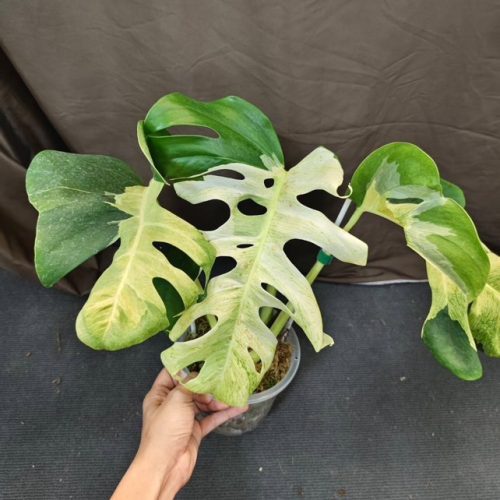

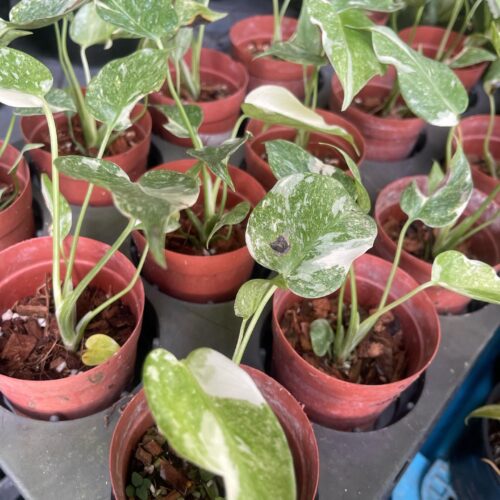
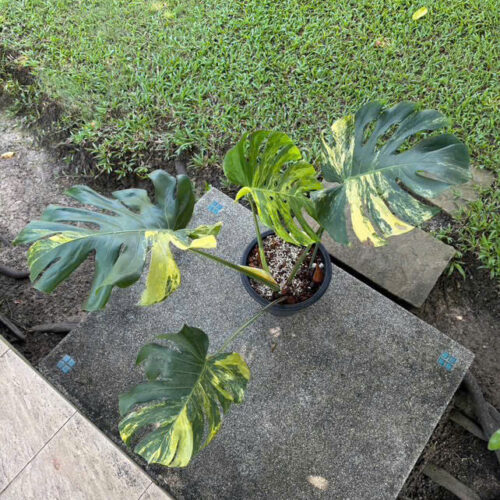
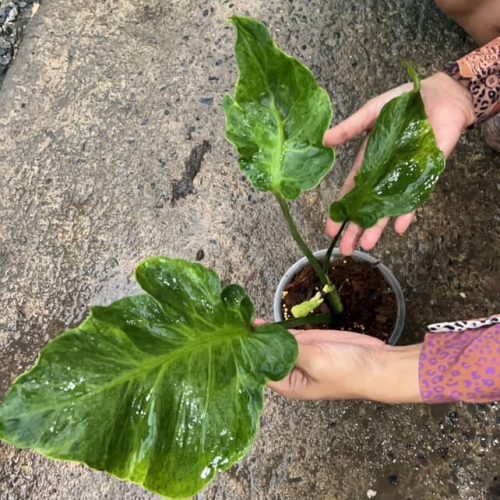
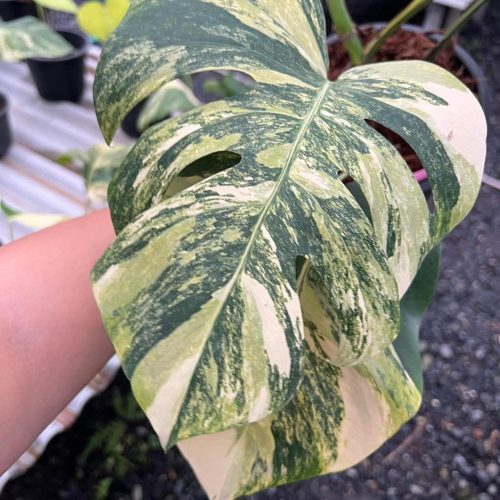

![10 Pots x Monstera Aurea Variegated / Mix Aurea tri color 3-4 leaves [well variegated]](https://greenboog.com/wp-content/uploads/2024/08/Monstera-Aurea-Tri-color-500x500.jpg)
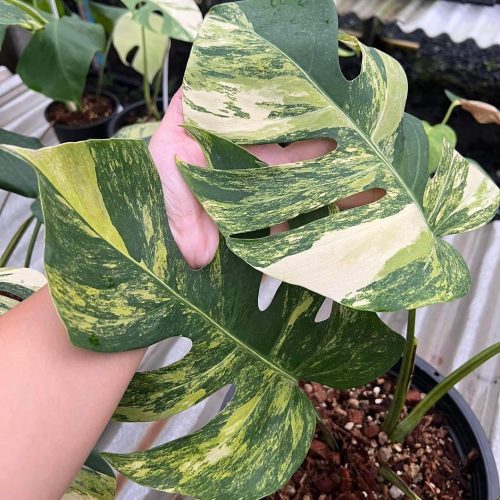
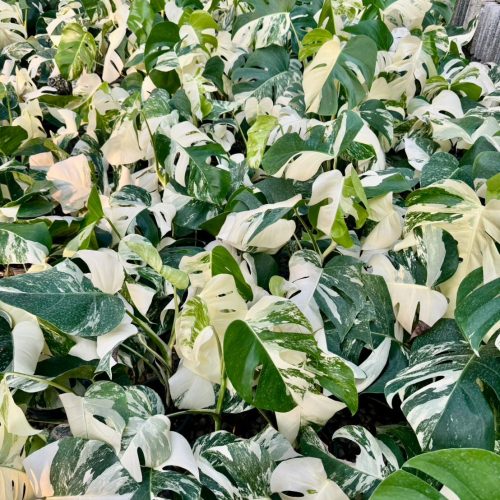
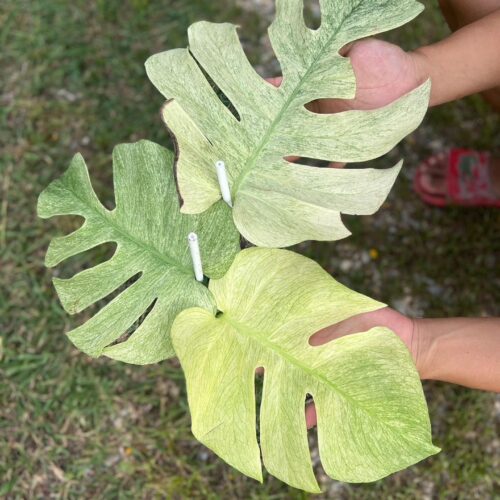
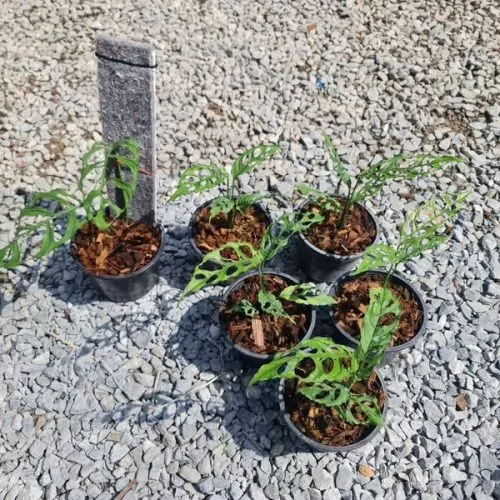
![[SALE] 10 Pots x Monstera Aurea Variegated 3-6 leaves [Medium size]](https://greenboog.com/wp-content/uploads/2025/01/Monstera-Aurea-variegated-4-6-leafs-500x482.jpg)

